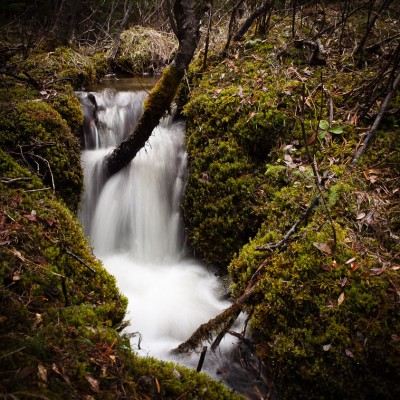 Small boreal waterfall in feathermoss It’s been a busy summer, but I’m slowly starting to work my way through all the photographs that I made during my time in Banff and in the boreal forest of north-western Alberta. This photograph is of one of my favourite things to come across while walking through the forest—a small creek flowing over a little waterfall. You can usually hear them a few steps before you see them and it’s such a peaceful, relaxing sound—birds in the background, cool morning breeze in the tops of the spruce—beautiful.
One of the big challenges of photographing in the boreal is that there is so much detail—understory plants, fallen leaves, twigs, etc. that it is sometimes hard to concentrate the focus of the viewer on the intended subject of the photograph. In this case, I used a fairly heavy vignetting in post-processing to darken the detail from the corners and concentrate the attention to the water and moss. I have a portfolio of boreal photography where I used another, more experimental technique to achieve the same goal. Click here to have a look at that portfolio.
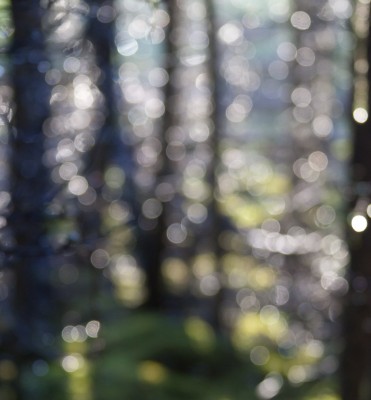 Bright morning after rain I’m slowly working my way to a major update/revision of my galleries (which, I apologize, have not been updated in a long time), and part of that process is a ruthless editing-down of my collection to best showcase my favourite images. Unfortunately, that sometimes means leaving out ones that I really like, and this image is an example of that. While it’s currently in my “Summer 2007″ gallery, and I like it at least as well as some of the ones that “made the cut”, it just didn’t fit with the other selections. So, I decided to post in the journal here instead, where hopefully it can still be enjoyed all on it’s own.
I made this photograph between Rocky Mountain House and Nordegg, Alberta in early June 2007. It had rained heavily the night before, and the branches and lichens in this dense black spruce stand were dripping wet as the sun came up. Each drop acts like a tiny prism, catching the light of the low sun. When the lens is de-focused as I did here, each specular highlight becomes a glowing circle of light, each with a slightly different colour depending on the angle. I know my blurry, out-of-focus work is not everyone’s cup of tea, but in this case I think it really made for an interesting image (I’ve included a “straight” shot of the same stand below for interest’s sake), and it’s also a great example of how the optics in a lens can create effects “in the field” that are unattainable using post-processing software (i.e. Photoshop). I’d love to hear your reactions to this image, just click below…
 Bright morning after rain–in focus
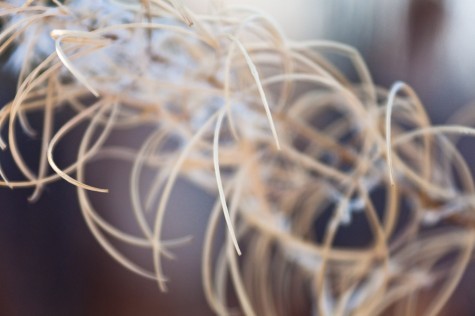 Curves in dried fireweed I know it’s odd to call this post “Dried fireweed detail” when 95% of the photograph is out of focus. For me however, this image captures the essence of the detail—and the depth—of the dried seed pods. The title’s also a bit if a play on words—using “detail” in the sense of a close-up of a portion of a larger work, like when a small section of a painting is enlarged in a book to show a painter’s technique, for example. I really enjoy getting in close to a photographic subject to look for an angle that can capture the greater “whole” of the subject while showing only a small portion.
Several of my favourite Alberta landscape photographers have been posting small galleries of their past year’s best landscape photographs, so I decided to do the same. It was fun to look back through a year’s worth of photos, and impossible to decide which were my “favourite”. I decided to pick one favourite photo from each of the locations in Alberta that I regularly make photographs including: Jasper National Park, Waterton National Park, and the Icefields Parkway in the Rocky Mountains; and Ministik Lake Game Bird Sanctuary, Whitemud Ravine, Gold Bar Park, and the Strathcona Science Park closer to my home in Edmonton.
I’ve posted all of the photos below as a group (in chronological order) but I will also create a separate entry for each photo to provide extra details about the image like I usually do—just click on the link below each photo to go to it’s detail page. (It will take me a little while to get them all up)
I hope you enjoy this small collection, and I do always appreciate it if you leave a comment with your thoughts or reaction. Happy New Year, and I wish you many fine photographs in 2010!
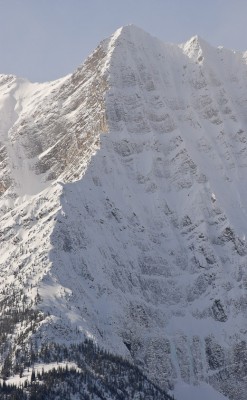 Mountain Geraldine ridge Along the Icefields Parkway [ Click for more details]
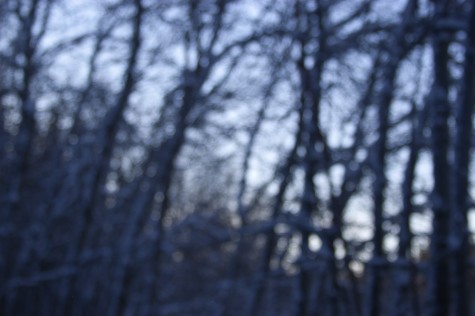 Pale winter sky through poplar canopy Ministik Lake (in the winter)
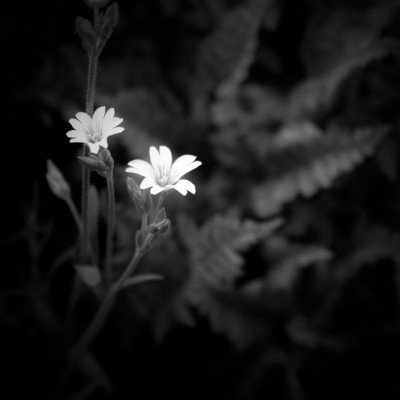 Chickweed blooms and fern Waterton National Park
 Brooding cloud over Ministik Lake Ministik Lake (in the summer) (I know that’s cheating a little)
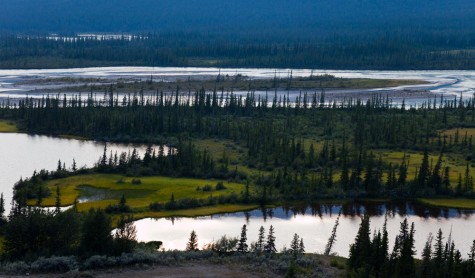 Athabasca River island at dusk Jasper National Park
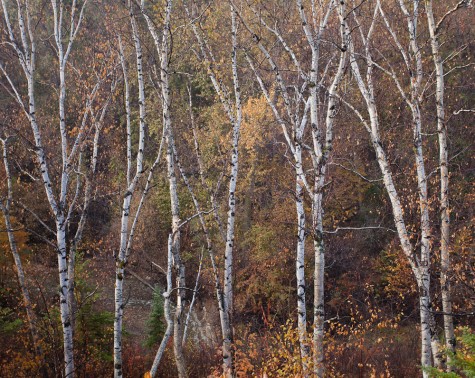 Birch stems and early autumn colour Goldbar Park (North Saskatchewan River Valley)
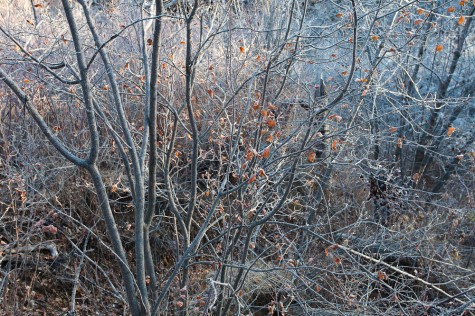 Late autumn willow thicket Whitemud Ravine [ Click for more details]
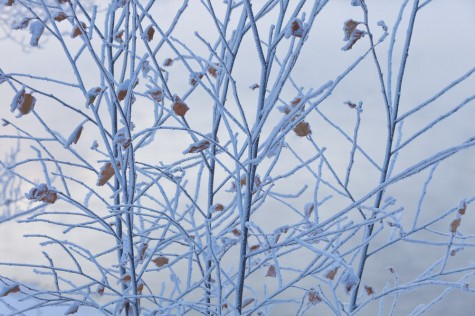 Ice fog frozen on alder saplings Strathcona Science Park [ Click for more details]
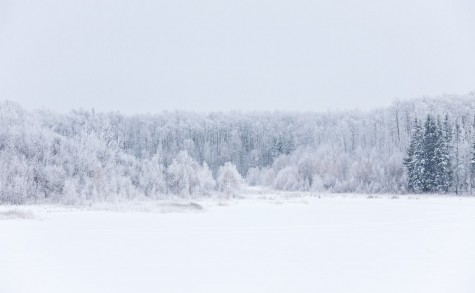 Ministik shoreline in white To continue the line of thought from my last entry, another type of composition that I find can work on grey, overcast winter days when the light is perfectly flat and even is a “high-key” image like this one. If there’s fresh snow, the whole landscape can turn the same colour–light grey. I find the trick is to ensure that my exposure is bumped up a little bit to turn the greys to white, and to find a little bit of contrast (spruce are great for this) for visual interest. These very subtle, almost monotone, images really capture the feeling of these most-subtle of winter days.
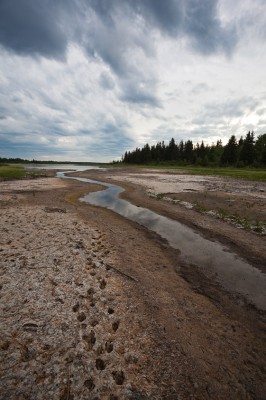 Tracks along drying channel Recently, Dan Jurak, one of my favourite Edmonton-area photographers and blogger, published an image on his photo blog that reminded me so strongly of this photograph of mine taken this past summer, that at first I thought they could have been taken at the same place. It turns out it’s not the same location, but similar compositions and similar subject matter—Alberta’s lakeshores are turning to mudflats (and our mudflats are turning to grasslands). I took this photo at the Ministik Game Bird Sanctuary, near the location of the photo in another recent entry of mine, it’s a different lake, but the same trend. I like the moodiness of this photo, with the somewhat threatening sky and the animal footprints receding towards the remnant lake.
 Oyster mushroom folds While sitting at the art sale this past weekend a good friend of mine dropped by and asked me to make her a print of this image. It has been a long time since I’d looked at this photograph, but I’m glad she asked because I’m really enjoying revisiting it. This was one of the largest Oyster mushroom clumps that I’ve ever come across. I was employed doing bird surveys near Calling Lake, AB in the summer of 2004, and it’s one of the best places I’ve been for photographing mushrooms (and black bears). I like how I was able to fill the frame with the folds and gills of this mushroom, emphasizing the organic shapes and colours. And it smelled absolutely terrific.
|
(Click photos to enlarge)
|
















